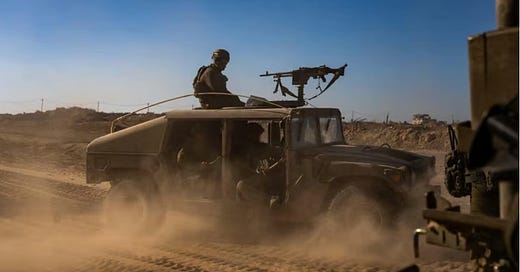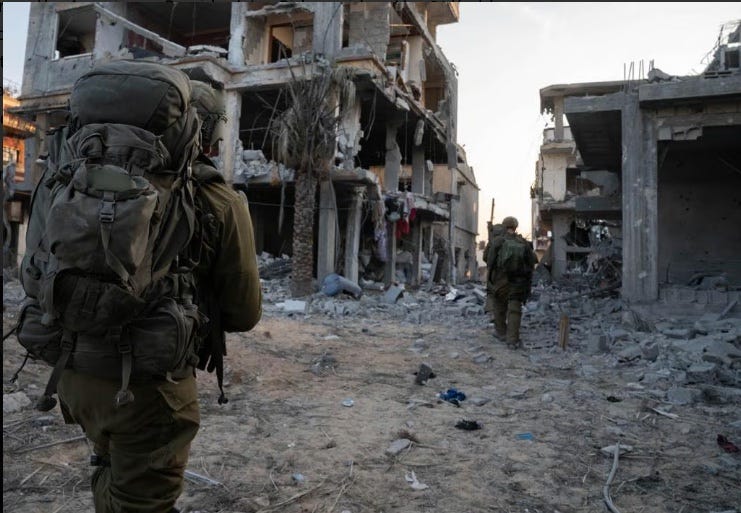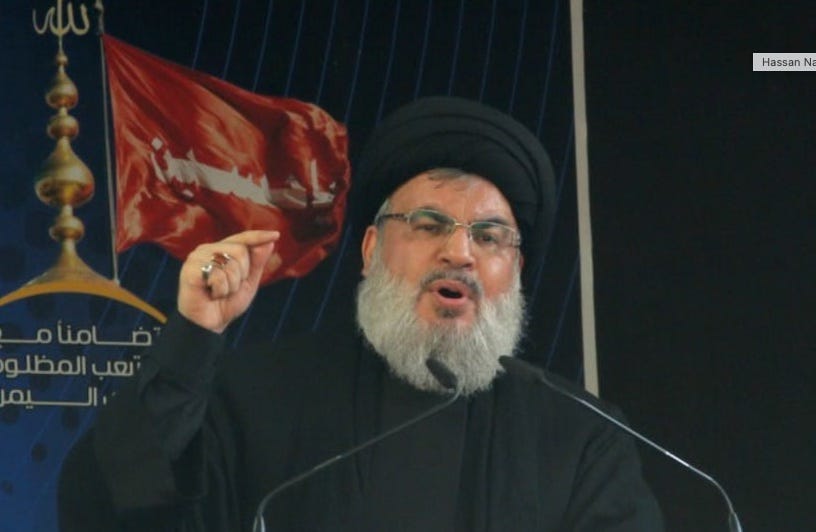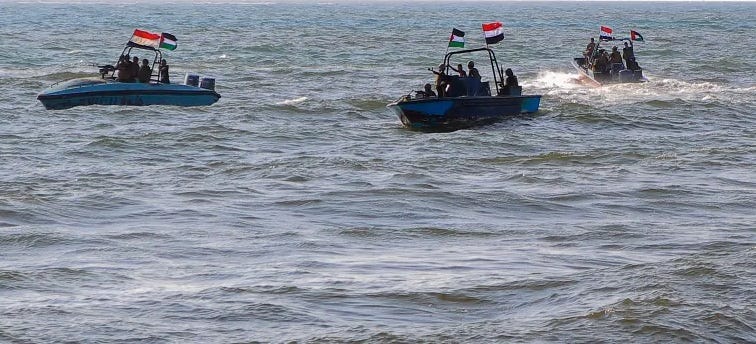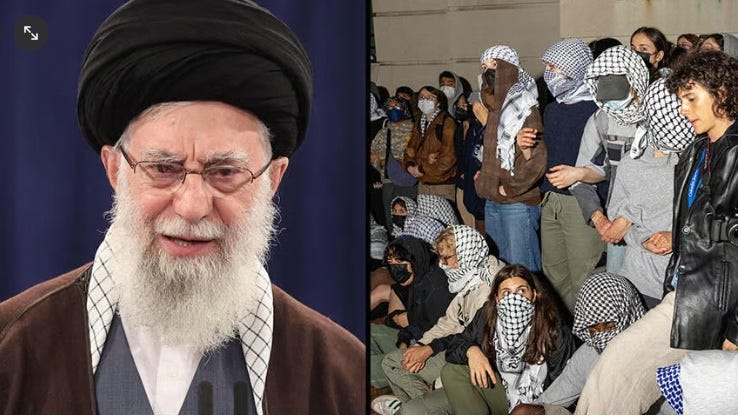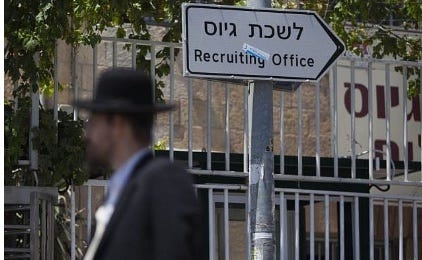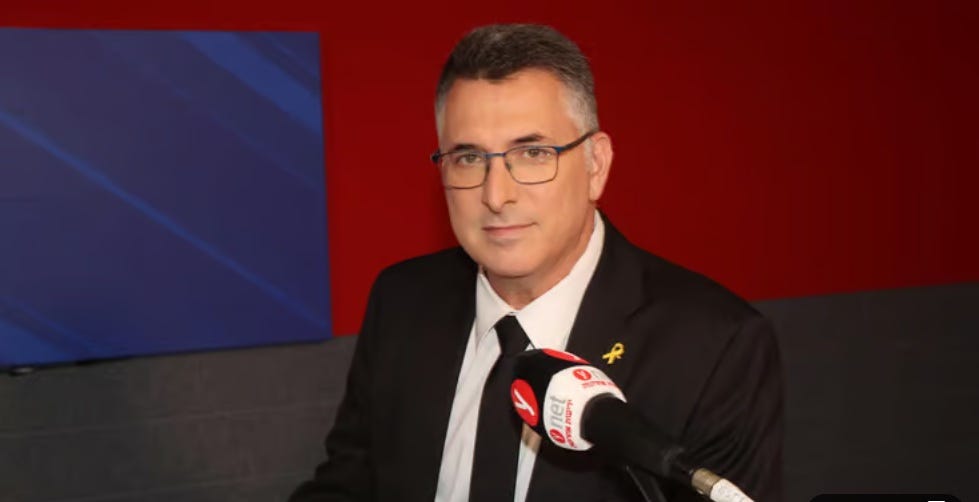You Quit, You Die
War Day 252
IDF operation in Gaza
Israel’s temperatures soared near 40 degrees centigrade (104 F) on Friday June 14th, and the Israeli troops in Gaza kept fighting in full combat gear.
According to Nadav Ayal writing in Ynetnews, “The end of the war is not an issue for senior members of the defense establishment. The IDF has been telling the cabinet that the defeat of the military arm of Hamas is very close.”
According to Ayal, the IDF estimates Hamas has lost about 15,000 men and approximately 60% of the Hamas military infrastructure has been destroyed. He wrote that Israel showed its superiority over Hamas by rescuing four hostages from the heart of the Nuseirat neighborhood in broad daylight.
Ayal also wrote that Israel’s military analysts say that Israel has “entered a new phase” through the IDFs successes and could end the war in the south “through an agreement in return for the abductees.”
The General Staff, he writes, recognizes that israel has defeated Hamas. Still, that does not mean that the fighting will end once a ceasefire is agreed upon. He says that if and when an agreement is reached, and afterwards should Hamas try to act against Israel again, “and we know very well they will try,” Israel will be free to take military action.
The basic problem, according to military leaders, is that ‘no matter how many tactical achievements we bring, there needs to be a clear strategic goal, otherwise we will continue to navigate from point to point without a decision.”
According to the IDF’s spokesman’s office, since the beginning of the war, 298 soldiers have fallen from the beginning of the ground offensive on October 27. Also, 1938 soldiers were injured from the beginning of the operation, of which 376 were seriously injured, 26 of whom are still in serious condition. 3822 soldiers have been injured since the beginning of the war on Oct 7th.
Gaza
IDF soldiers in Gaza
According to the Wall Street Journal, Hamas leader Sinwar has said that those Gazans killed in the war were a ‘necessary sacrifice.’ He also said that due to his strategy, or at least the strategy given him, he now had “Israel right where we want them.”
Analysts say that Sinwar means that the world opinion is now on Hamas’ side, and he could stall any peace agreement for as long as he wants because each day means more anti-Israel protests and more animosity against Israel.
Dr. Harel Horev, writing in the Jerusalem Post, opines that “Sinwar doesn’t want a ceasefire deal. He is looking to up the international pressure on Israel.” Sinwar’s goal: to get Israel to agree to terms Hamas wants, not that Israel wants.”
According to Jennifer Teal, writing an opinion piece in Ynetnews, calls for a permanent cease-fire are a mistake. She says that Hamas was never and will never be a partner for peace, or a reliable cease-fire actor. She writes that “since the savagery of October 7th (when Hamas invaded Israel, murdering 1200 and taking 252 captive) the equation has changed. Israel will now do what it has to do to remove the terrorist threat.
That is also because, Hamas has a long history of breaking cease-fires and given the opportunity to rearm they will continue with their declared goal of destroying Israel.
“Throughout their history, Hamas and other of Gaza’s armed factions, have drawn the IDF into prolonged guerrilla warfare: in 2008-2009, 2012, 2014 and 2021. Material supplied to Hamas by Iran has helped them to build their sizable rocket arsenal.
“Ultimately, these conditions all lay the foundations for yet another, potentially even bloodier, Gaza war. Therefore, Israel’s position is firm, and backed with untold public support: enough is enough. The threat to Israel must definitively stop.”
Teale points out that the truce proposal espoused by US President Joe Biden claimed Hamas was no longer capable of launching an attack on Israel as they did on Oct 7th. However, she claims, these statements do not take into account how “Hamas can easily re-obtain such capability and …carry out, as promised by its leaders, another October 7 once again.”
According to Teale, “There is only one sustainable trajectory in this war, especially as Iran is becoming bolder and more aggressive, and Hezbollah mounts up its aggression as well: win over Hamas in Gaza, return all the hostages, and usher in a new reality in the Gaza Strip that will guarantee Israel’s long-term security needs, without Hamas in power.”
According to a PCPSR (Palestine Center for Policy and Surgery Research) poll, 54% of those in Gaza support an armed struggle to get a Palestinian state. 25% preferred negotiations. 16% preferred a non-violent resistance.
A slight rise was apparent in support of Hamas, 38 percent up from 34% three months ago. However, there was a drop in expectations with 48% expecting Hamas to win the war, down 8% from three months ago. 25% expected Israel to win. 46% want Hamas in power after the war. 76% supported the Oct 7 attack, down from 71% three months ago.
North
Fire in Metula
The north of Israel continues to be under constant rocket fire from Hezbollah in Lebanon.
After the recent spate of rocket fire Yehuda Duah, head of Katrin regional council, said he has never seen such severe attacks. There were an endless stream of sirens. Yariv Rosenberg of Kibbutz Malkiah said that he and his group of volunteer residents had put out 18 fires not he kibbutz since the war began.
And Israel has continued to retaliate, sometimes with artillery, sometimes with missiles, sometimes with armed drones. The latter are used to eliminate Hezbollah commanders spotted traveling through Lebanon.
On Tuesday, the IAF eliminated Hezbollah terrorist Sami Abu Shari, a Hezbollah commander. This set off a firestorm of rockets from Hezbollah.
Hezbollah fired 50 rockets at the Golan and 20 at the Galilee.
Fires were reported in the Golan after a Hezbollah drone crashed in an open field. Five people were hospitalized. The IDF reported that over 100 Hezbollah drones have been intercepted since Oct. 7th.
Approximately 250 rockets were launched on Wednesday towards northern Israel, according to the Jerusalem Post. These attacked upset those expecting to enjoy a quiet Shavuot holiday and caused an endless string of warning sirens throughout the north.
Analysts say this massive bombardment came as a result of the assassination of senior Hamas officer Sami TaleB Abdullah, who was the equivalent of a Brigadier General, the highest ranking Hezbollah officer to have been killed so far in this war.
Abdullah, who commanded a regional division in S. Lebanon, was behind numerous attacks on the Galilee for over 20 years, according to the IDF. After spotting his presence from the air, Abdullah was eliminated by a missile from a fighter jet.
Hezbollah leader Hassan Nasrallah
The Jerusalem Post reported that Abdullah’s assassination has worried top Hezbollah officials. According to Prof. Amazia Bar Am, “The powerful elimination worries Hezbollah members… They now understand that the IDF knows much more about them them than they thought.”
He added, “Hezbollah Secretary-general Hassan Nasrallah realizes that the IDF has the ability to kill him whenever it wants, and I believe this worries him quite a bit.”
Bar Am thinks that neither Hezbollah nor Iran want a war with Israel at this time. Thus, they are staying within a ‘red line.’ That means they do not strike heavily populated cities or large civilian targets. So far, Hezbollah claims they have only been aiming at military targets, like the Iron Dome installations, and intelligence bases housing the 8200 units.
Striking a large civilian target would be considered an act of war and would allow Israel to attack. Bar Am believes that for now, Hezbollah is content to continue fighting a ‘war of attrition’ along the accepted red lines.
Bar Am also points out that President Biden has said that should Israel be attacked by Hezbollah the USA would join in the fight. This, according to Bar Am, is not something Iran wants to happen. Hence, a restriction on how far Hezbollah is allowed to go. However, should Israel initiate the war, the USA has said they would not get involved.
Meanwhile, France, the USA and others are trying to find a diplomatic solution to the war in the north.
According to Channel 12TV news, the northern city of Kyriat Shmona is a ‘ghost town.’ Most of the 20,000 residents have fled. 30 Hezbollah rockets hit the town on Thursday June 13th causing property damage but no injuries. A TV news reporter rode with a Kyriat Shmona bus driver on his route through the city passing one empty bus stop after another with no passengers in sight.
The border village of Metula is a constant target with nearly every home hit at least once.
Still, in an interview on Channel 12TV, National party leader Benny Gantz has said that residents evacuated from the north whose cities kibbutzim, moshavim and villages are not within close proximity to the border should return to their homes by September 1st at the start of the school year.
Critics point out that by evacuating the entire north in October over fears of a war with Hezbollah, the north, long a tourist venue, has been deserted. Media reports that many families have resettled in the center of the country, found work, registered their children in schools, and have no intention of returning to the north.
Others, long-term residents interviewed by the media, say that the Galilee is their home. Some of those interviewed on their moshavim and kibbutzim say they have spent their lives on these grounds and intend to stay. However, most of these are middle-aged to older Israelis who have deep roots to their kibbutzim, moshavim or even cities like Kyriat Shmona.
Observers wonder how long it will take for the fighting in the north to die down and permit those who want to return to their homes to do so. And to rebuild if necessary.
One pundit points out that the settlements in the north, like those along the border with Gaza, were set up as buffer zones to protect the populous and financial hubs in the center of the country. That purpose is still exigent, says the pundit. The pundit believes that the northern and southern settlements must be repopulated.
Channel 12TV reported that the fires were fought by local residents and reserve combat units made of of local residents. Itai Kruz showed Channel 12TV the hole in the wall near the bed of one of his children. Boaz Peri showed the reporter the damage to his house but said, “I’m not leaving. My roots are here.”
Hostages
Israel and Hamas continue to negotiate the terms to release the hostages. Most Israeli observers believe Hamas has no intention of ever agreeing to release the hostages seeing them as a negotiations chip for months if not years to come.
Four hostages rescued from Gaza
120 hostages are believed to still be in Gaza. At last estimate 87 were supposed to be alive.
The three men (out of four hostages) rescued from Gaza last week told parents and reporters that they were left blindfolded for days, sometimes locked in a bathroom, sometimes covered up with blankets, frequently beaten.
They were also told that their relatives were killed, or had abandoned them and that the IDF would kill them if they could. One hostage was so fearful for his life when the IDF broke into the apartment where he was held thinking the soldiers would kill him. He had to be calmed down and coaxed out of the apartment.
Hamas said on Friday June 14 that they did now know where all of the hostages were being kept. Some observers say that this is just another way for Hamas to stall the negotiations. Army sources say that it is now uncertain how many of the hostages are still alive.
According to a report in the New York Times, Hamas has “standing orders” to kill the hostages should they think the IDF is closing in on them.
And Haaretz columnist Amos Harel wrote, “Without and Israel Hamas deal, the Gaza fighting will drag on as the north may plunge into an all-out war.”
West Bank
Car where Hamas commander killed in West Bank
The IDF continues operating in the West Bank against terrorist targets.
According to the Times of Israel, on Monday, June 10th, four terrorists were killed in a firefight with Israeli forces after trying to run over IDF soldiers during an attempted escape from the West Bank village of Kafr Nima near Ramallah. A Hamas commander in the car was also killed.
Six Palestinian gunmen were killed as heavy clashes erupted near Jenin during an IDF raid. On Thursday, June 13th, two Palestinian gunmen were killed by the Duvdevan commando unit in the West Bank city of Qabatiya near Jenin. At least two Palestinians were detained.
Also, on Tuesday June 11, IDF troops wrapped up an 18-hour counter terror operation in the Far’a refugee camp, where gunmen were killed and a bomb making lab uncovered.
80 IEDs (Improvised Explosive Device) were found, as well as barrels packed with explosive material and weapons secreted inside a car. A drone strike against two armed Palestinians was also carried out.
Eight wanted Palestinians, suspected of terrorist activity, were detained.
According to the PCPSR poll, 41% of the Palestinians polled in the West Bank supported Hamas, up from 33 percent 3 months ago. 17% favored Fatah (Palestinian Authority).
79% of those polled thought Hamas would win the war. 71% wanted Hamas to rule Gaza after the war.
87% said they got their news about the war in Gaza from Al-Jazeera, the Qatar funded TV network. (The Israel Al Jazeera office was recently closed down by court order) 73% supported the Hamas attack on Oct 7th. They said they thought the war brought global attention to the Palestinian struggle. And 94% wanted the octogenarian Mohammed Abbas to resign as head of the Palestinian Authority.
Red Sea
Houthi fast attack boats in Red Sea
Last week, 2 ships caught fire after being struck by missiles fired off Yemen’s coast by the Iranian-backed Houthi rebels. No report of casualties. The Iranian-backed Shiite Houthis are at war with Sunni Saudi Arabia.
On Wednesday June 13th, the Liberian-flagged Tutor, a coal carrier, was attacked by a combination of an unmanned surface boat, drones and ballistic missiles. A civilian crewman was seriously injured.
The ship began taking on water. According to theUS Central Command (CENTCOM) this was the first time the Houthis had used a boat as a weapon.
According to press reports the Houthis have been launching scores of drone and missile attacks on shipping gin the Red Sea and the Gulf of Aden since November, ostensibly in support of Palestinians in Gaza.
So far, the Houthis have sunk one ship, seized another vessel, and killed three crewmen in several attacks.
Politics
A recent poll showed that Benny Gantz’s coalition of center right parties would garner 65 seats in new elections but the Netanyahu led coalition would only get 52 seats.
However, Gantz’s National Party would get 24 seats in a new election and Netanyahu’s Likud 22 seats.
According to Moab Vardi, Channel 1 Kan’s political and foreign affairs correspondent, “Netanyahu is playing for time. He sees that each month that passes, as the war goes on, and we get further and further away from Oct 7th, he gains more votes.
Iran
Khamenei and American Students on Campus
According to Dr. Avigdor Haselkorn, writing in the Jerusalem Post,”Iran is spending billions of dollars to enact a four-part strategy to dominate the Middle East.” He wrote that, “the plan has been in place for years and is now showing clear-cut results.”
The four parts are a ‘Proxy War,’using Hamas and Hezbollah and others; Primitive Warfare, using simple rifles, mortars, RPGs and shahids (martyrs), to counter Israel’s jet fighters and tanks and smart bombs; and the ‘gigantic military fortress in Gaza’s tunnels, with an estimated 5700 separate entrances into @600 kilometers of tunnels, designed to attack Israel.
Haselkorn claims that the IRGC (Islamic Revolutionary Guard Corps), have established a ‘Resistance Front’ aimed at confronting Israel and ousting the US from the Middle East.
Part of Khamenei’a plan is to use students in US universities as part of his ‘Resistance front.’ He has also reportedly encouraged these students to “become familiar with the Quran."
The U.S.State Department estimates that Iran has spent more than $16 billion to keep Bashar Assad in power in Syria., assisted by Iran’s ally Russia. And that Iran supplies Hamas with about $350 million a year.
According to Haselkorn, Iran aims to carve out a ‘zone of influence’ to protect the Shia regime from the surrounding Sunni-dominated countries. And also to export the Islamic Revolution crafted by revolutionary Iran’s founder, Ruhollah Khomeini.
Haselkorn says that Iran has successfully created this expanded zone of influence, capturing four Middle Eastern countries-Lebanon, Syria, Iraq and Yemen, since it took power in 1979. “All without itself engaging in war.”
Haselkorn says, “Time is of the essence. In the absence of a comprehensive Israeli strategy to defeat the Iranian grand scheme, Khamenei's June 3 boast that “the Zionist regime is gradually melting before the eyes of the people of the world,” could become sufficiently convincing for the mullahs to try and deliver a coup de grace to the Jewish state.
The UN reports that Iran is successfully enriching weapons grade uranium and is close to producing a nuclear weapon.
Israel Beinenu leader Avigdor Leiberman has said that he expects Iran to launch an all out attack on Israel in the coming years.
Politics
Haredi (ultra-Orthodox) man past IDF recruiting office
The contentious law to draft or exempt ultra-Orthodox men into the army has passed its first reading. The IDF Chief of Staff Herzi HaLevi has said that “Israelis don’t have the right to decide whether to enlist or not.”
Haaretz criticizes the ultra-Orthodox parties who only use the government as an “ATM machine.”
The IDF has said that since the war began the need for more soldiers has become apparent. Military experts say that prior to the war the government’s approach was a small, lean, efficient army rather than a large standing force.
However, that concept changed after Oct 7th when the IDF realized they needed to field more troops in more places and be ready to fight on a minutes notice. The problem is the lack of manpower. Hence, the glaring exception of the ultra-Orthodox exemption from the draft became a bone of contention.
Pundits say that Prime Minister Netanyahu is bowing to pressure from the ultra-Orthodox and the ultra-nationalists in excusing the ultra-Orthodox from active service.
Gideon Saar, head of the New Hope party
New coalitions are expected to form should elections ever be called. Gideon Saar, head of the small New Hope party was once an up-and-coming Likud star until he was sidelined by Netanyahu.
Saar has reportedly been in discussions with Israel Beitenu leader Avigdor Leiberman. Both has said they’d be interested in joining a Gantz led government.
However, both Saar and Leiberman have a dour outlook on the present government’s approach to the struggle with Iran. “Netanyahu is stuck in a 1964 mindset,” said Saar in a TV interview. “And he has to go.”
Saar agrees with Leiberman about the Iranian threat. He thought that Israel was fighting a multi-front war and that Gaza was only a part of it. The others are Hezbollah, the Shiite militias, Hamas, Houthi’s in Yemen, and the social media.
Saar said there was a clock tower in Iran with the year 2040 displayed on it. He said that 2040 is the time by which Iran expects Israel to have vanished. Saar believed that the current struggle is “a very long event, of years and it is important to coordinate expectations of the public.”
Editorial
It was as if time stood still. Israelis were glued to their TVs and car radios and their internet news feeds. Four hostages were rescued after eight months in captivity. A watershed moment. But then what?
National Party leader Benny Gantz quit the unity government and left the war cabinet. Hamas’ Sinwar rejected Israel’s proposal for a ceasefire. Demonstrators continued to demand the hostages be released. Even Gantz came out with a statement that the war should pause so the hostages could be released. He said that freeing the hostages was the most important goal. If not, the hostages would be held for years and years. This as the four rescued hostages relate tales of torture both physical and psychological.
Most military analysts say that Israel must fight at least another six-weeks in Gaza, destroying Hamas’ remaining military brigades to prevent a resurgence of attacks.
And then there’s Iran. More and more reports are appearing in the media that Iran’s long term plan is working. The Iranians plan to fight Israel on multiple fronts. The Iranians call this “Resistance.”
Gaza with Hamas, Lebanon with Hezbollah, Hamas and Islamic Jihad and other terrorist groups in the West Bank, and what analysts consider one of the most powerful weapons, public opinion.
Iran’s supreme leader Khamenei has praised the campus and street protests saying these protesters have joined the “Resistance.” The struggle to defeat and ultimately eliminate Israel.
Add to this the UN’s report that Iran is continuing to enrich uranium. This means that every day Iran gets closer to a nuclear weapon. A few weeks ago Iran launched a barrage of missiles at Israel. Pundits are certain that given the capability to arm those missiles with nuclear warheads, Iran would launch a devastating attack on Israel.
Israel faces an implacable enemy in Iran. As long as Iran is capable of financing and arming terrorist groups like Hamas and Hezbollah and the Houthis in Yemen, and fund the social media campaigns attempting to turn the world against Israel, the foreseeable future appears filled with conflict and misery.
Israel has no choice in the matter. Iran will never allow Hamas to agree to a ceasefire that leads to a lasting peace. Neither will Hezbollah be able to agree to peace.
In any case, according to experts, Iran’s ideology is to destroy Israel and spread fundamentalist Islam. Israel is not only fighting a physical war in the labyrinth of Gaza, but an ideological war, much as the US fought against the Soviet regime before its collapse.
How to battle Iran not only on the ground but also in the minds of their militants is a real challenge. Meanwhile, unfortunately, Israel must continue to fight in Gaza, and continue to retaliate in Lebanon. As of now peace appears unattainable.
Cries of “Stop the War” may echo the protests in the Vietnam era, but then the fighting was 7,000 miles away. Losing the war in Vietnam meant losing face for the US army, not losing the USA as a country. Israelis understand this. As Gantz said in a TV interview recently, this will be a long struggle. And it seems an existential one.

